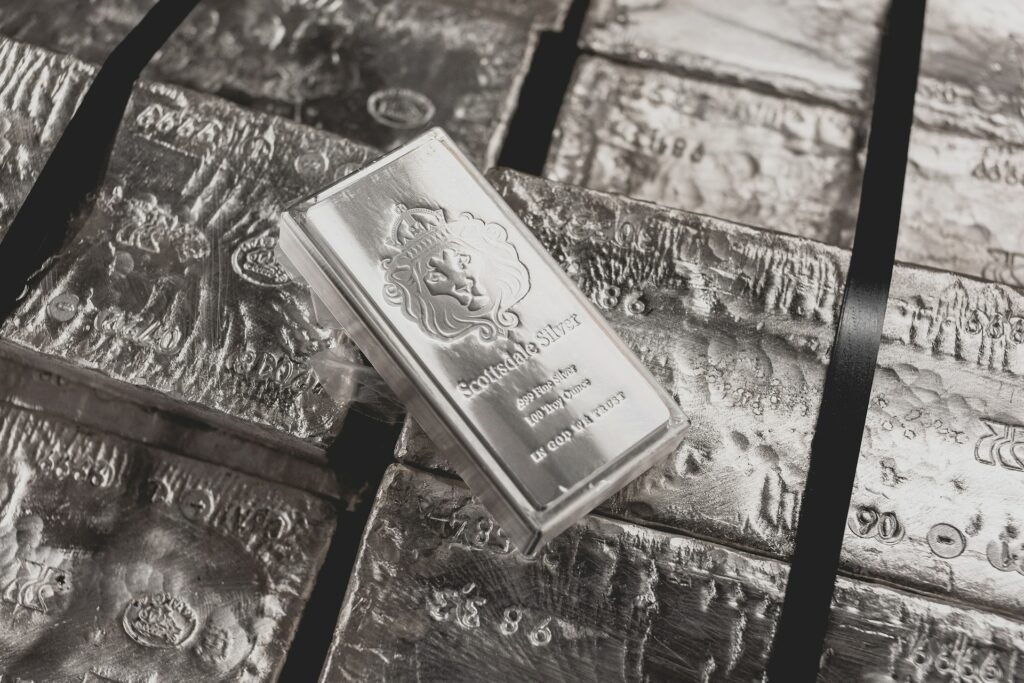Introduction
Silver has been a valuable commodity for thousands of years. It has been used for jewelry, coins, and other decorative purposes. However, silver bullion in particular, has played an important role in the world’s economy. This blog post will discuss the history of silver bullion and its modern-day uses.
The History of Silver Bullion
Silver bullion has been used as currency for centuries. It was first used in the form of coins, which were minted in ancient Greece around 600 BC. The coins were made of pure silver and were used as a medium of exchange in trade. The Roman Empire also used silver bullion coins as a form of currency, which became known as the Denarius.
During the 16th century, silver from the New World flooded the European market, causing inflation. This led to the creation of the first silver bullion coins, which were produced by the Spanish Empire. These coins were traded globally and are still highly sought after by collectors today.
In the 19th century, silver bullion was used to back currencies, including the US dollar. The US government passed the Coinage Act of 1873, which demonetized silver and put the country on the gold standard. This led to a decline in the value of silver bullion, but it remained an important commodity in the global economy.
Modern-Day Uses of Silver Bullion
Today, silver bullion is still used as a means of investment and trade. Investors purchase silver bullion to hedge against inflation and diversify their portfolios. Silver bullion coins, such as the American Silver Eagle and the Canadian Silver Maple Leaf, are popular among collectors and investors alike.
In addition to its investment value, silver bullion is also used in various industries. It is commonly used in the production of electronics, jewelry, and silverware. Silver is also used in the medical field due to its antibacterial properties.
Future of Silver Bullion
The future of silver bullion is uncertain, but many experts believe that the demand for the metal will continue to rise. As the world becomes more digital, the demand for physical silver may decrease. However, silver bullion is still a popular investment option among individuals and institutions alike.
As the world shifts towards renewable energy sources, silver bullion may also become more important. Silver is used in solar panels and other green technologies, making it a valuable resource in the fight against climate change.
Introduction to Gold
Gold has been a symbol of wealth and power for centuries. It has been used for jewelry, coins, and other decorative purposes. However, gold bullion, in particular, has played an important role in the world’s economy.
The History of Gold
Gold has been used as currency for thousands of years. It was first used in the form of coins in ancient Egypt around 2500 BC. The coins were made of pure gold and were used as a medium of exchange in trade. The Roman Empire also used gold coins as a form of currency, which became known as the Aureus.
During the Middle Ages, gold was used as a means of payment between merchants. Banks began to emerge, and gold was used to back paper money. This led to the creation of the gold standard, where the value of a country’s currency was tied to the amount of gold it held.
In the 19th century, the California Gold Rush led to a surge in the production of gold. The United States established the Gold Standard Act in 1900, which made gold the only standard for redeeming paper money. This led to a period of economic stability and prosperity.
Modern-Day Uses of Gold Bullion
Today, gold is still used as a means of investment and trade. Investors purchase gold to hedge against inflation and diversify their portfolios. Gold coins, such as the American Gold Eagle and the South African Krugerrand, are popular among collectors and investors alike.
In addition to its investment value, gold is also used in various industries. It is commonly used in the production of electronics, medical devices, and aerospace equipment. Gold is also used in dentistry due to its biocompatibility and non-toxic properties.
Future of Gold
The future of gold is uncertain, but many experts believe that the demand for the metal will continue to rise. As the world becomes more uncertain, gold may become a safe haven asset for investors. Gold is also used in emerging technologies, such as nanotechnology and biotechnology, which may increase its demand.
As the world shifts towards renewable energy sources, gold may also become more important. Gold is used in the production of solar panels and other green technologies, making it a valuable resource in the fight against climate change.
Conclusion
Both silver and gold have played important roles in the world’s economy throughout history. While gold has been traditionally viewed as a symbol of wealth and power, silver has also been used as a means of currency and investment. Today, both metals are still highly sought after by investors and collectors alike.
Silver and gold both have modern-day uses in various industries, and their demand may continue to rise as the world shifts towards renewable energy sources. While the future of these metals is uncertain, they have proven to be valuable commodities throughout history and will likely continue to hold their value in the years to come.





